I’ve been seeing a lot of yellow butterflies recently and this Westwood’s Yellow, Eurema westwoodii (my gallery link) seems to be one of the “regulars” this year for the first time. See more in my gallery link above.
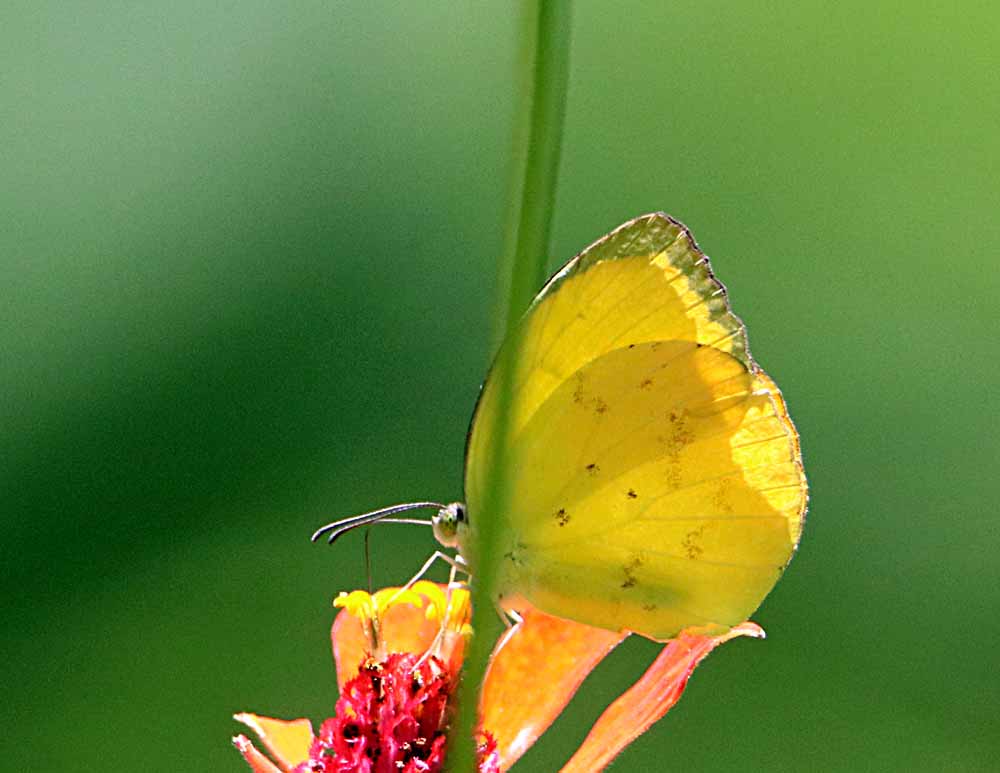
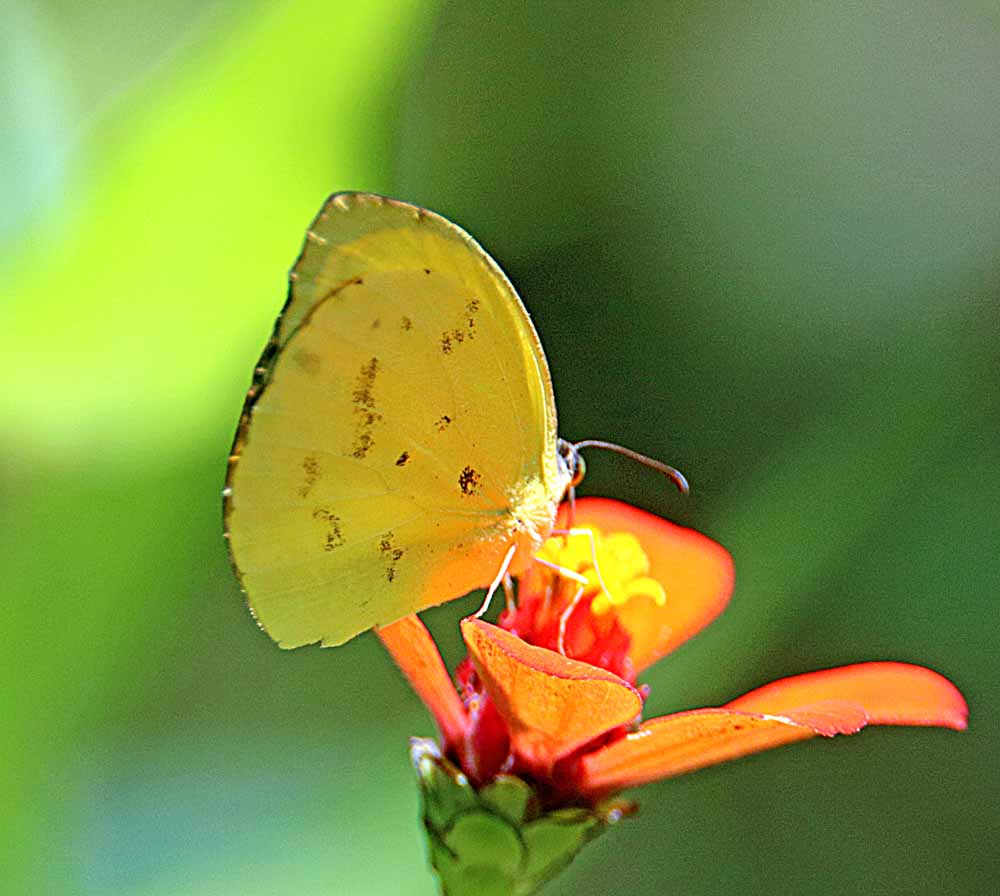
¡Pura Vida!
I’ve been seeing a lot of yellow butterflies recently and this Westwood’s Yellow, Eurema westwoodii (my gallery link) seems to be one of the “regulars” this year for the first time. See more in my gallery link above.


¡Pura Vida!
This little bird feeds in the grasses usually, though I caught him yesterday afternoon in my neighbor’s dead tree. He is the Yellow-faced Grassquit, Tiaris olivaceus (eBird link) which I have seen multiple times in my neighborhood along with a sighting at Curi-Cancha Reserve in Monteverde and at Rio Celeste Lodge near Tenorio NP. My other photos are in my gallery titled: Yellow-faced Grassquit.
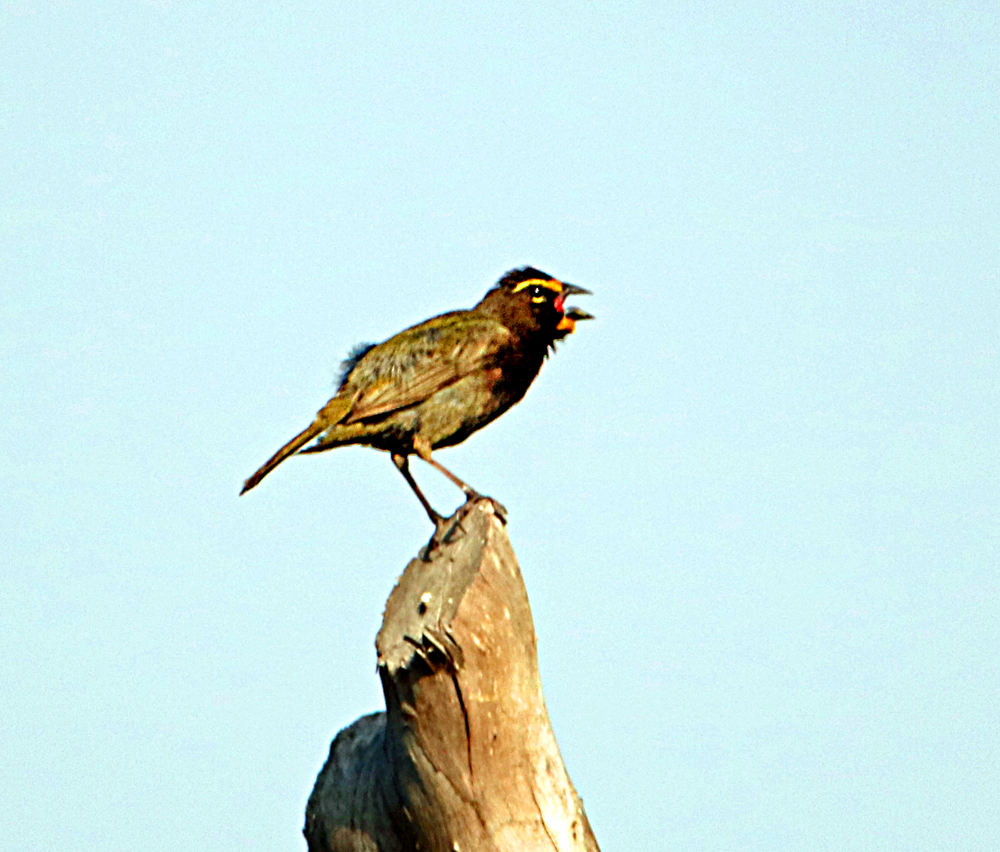
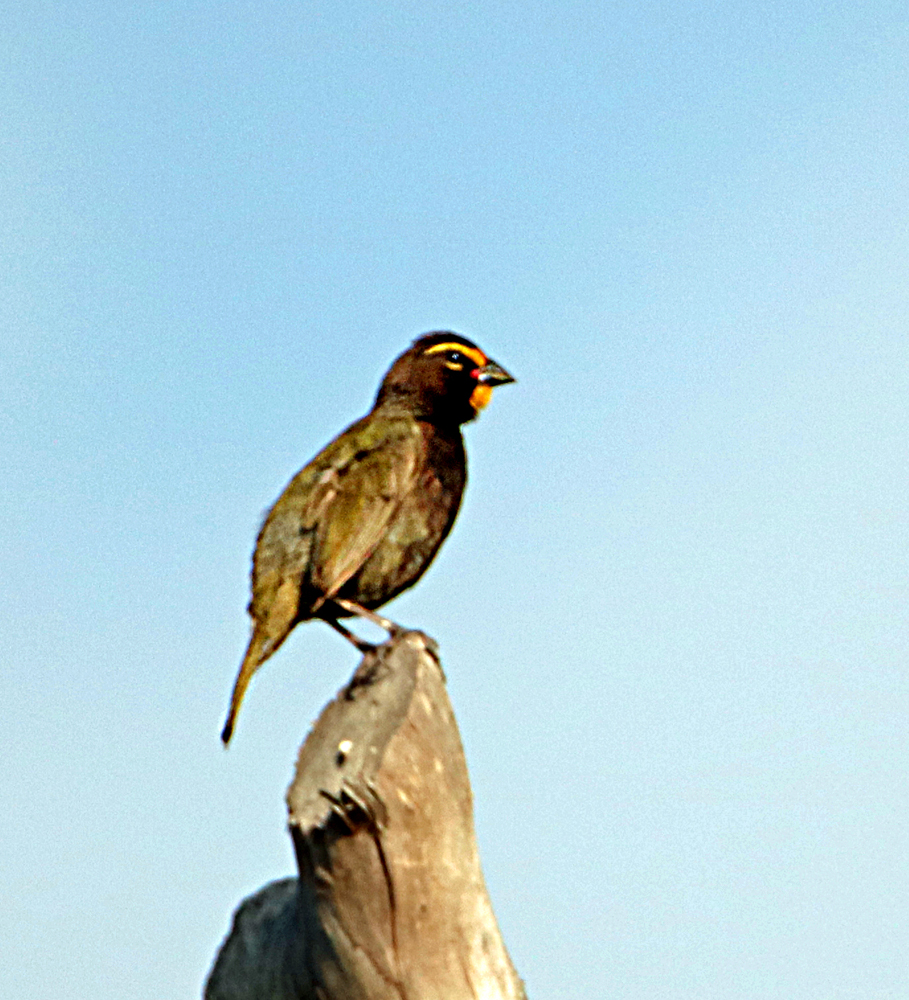
¡Pura Vida!
Continue reading “Yellow-faced Grassquit”The Julia Heliconian Butterfly always has beige or muted colors on the bottom of the wings, but this one photographed in my garden in July seemed “muted” all over, most likely because of the sky or sunlight that particular day. It gave this particular butterfly a feeling of calm, sophistication, and nostalgia, I think. Evoking a sense of subtlety.

See how bright an orange the top wings can be in my gallery: Julia Heliconian. And 2 more shots of this one . . .
Continue reading “Muted Colors Julia & Health Update”One of the tiny “seedeater-type” birds in the cow pasture across from my house, the Blue-black Grassquit, Volatinia jacarina (my gallery link) which is one of the first birds I photographed on my first trip to Costa Rica in 2009. 🙂
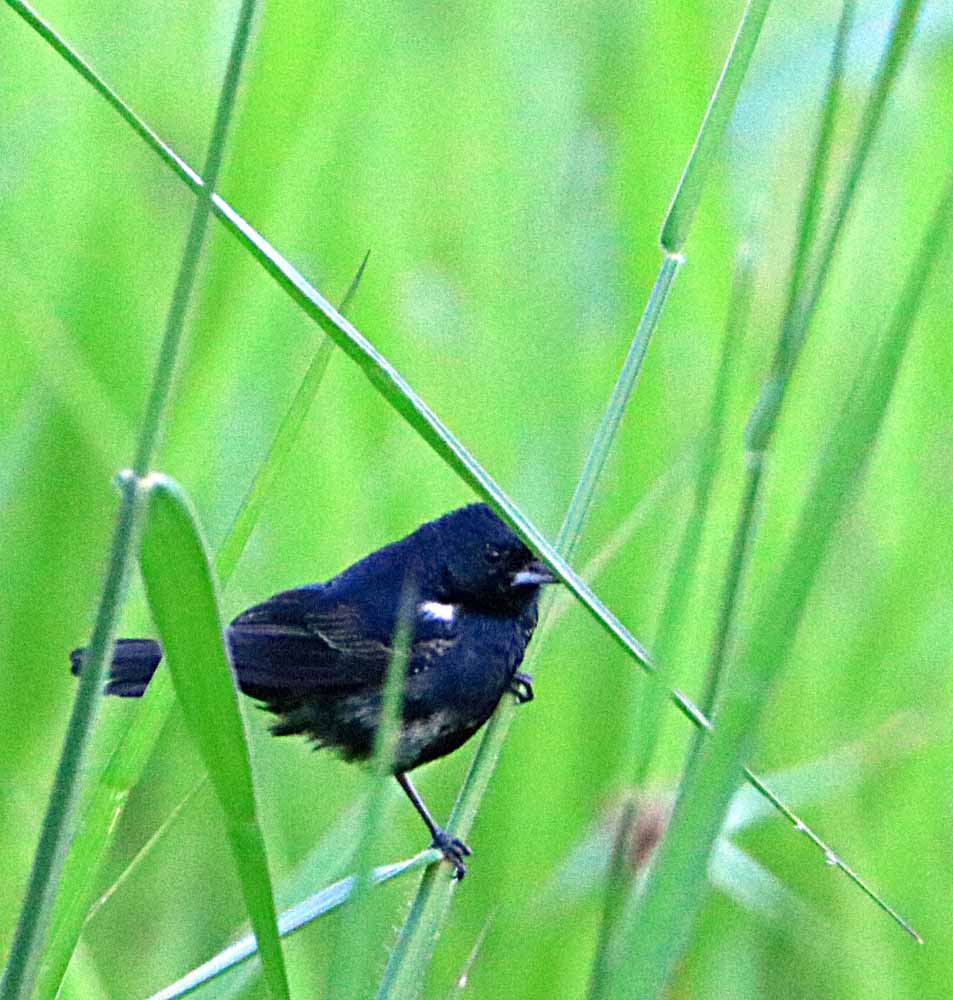
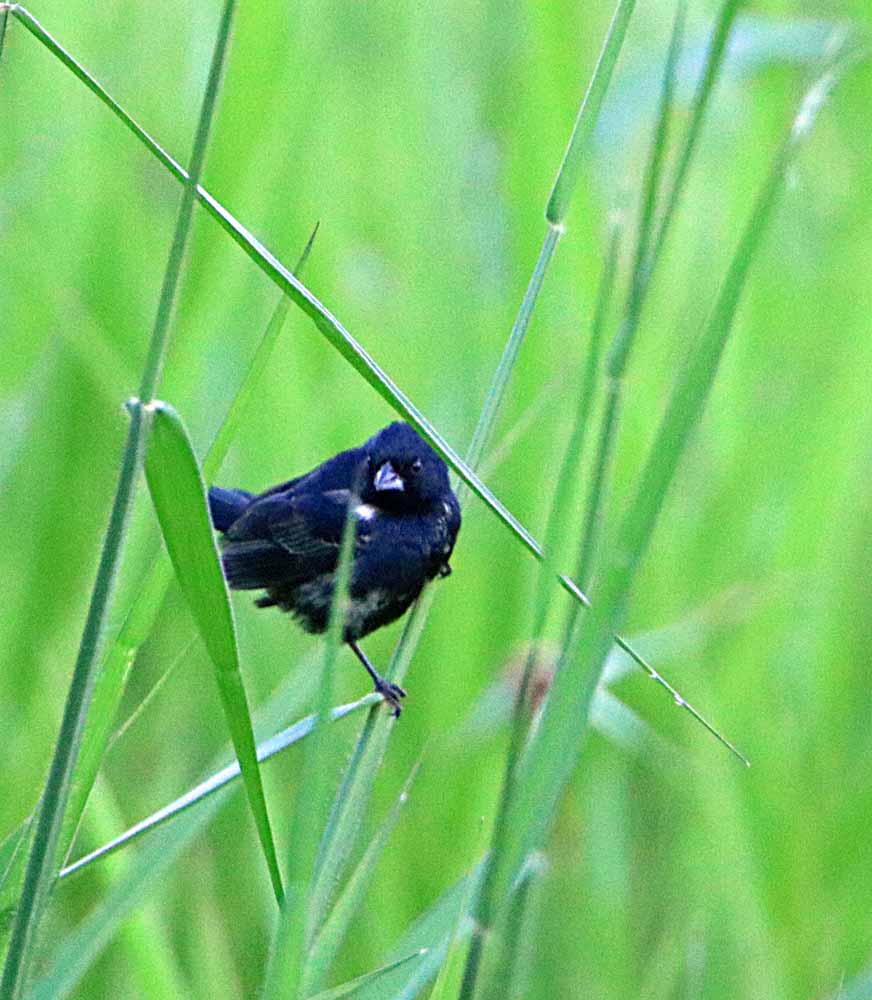
¡Pura Vida!
This Medarda’s Virbia or Stoll’s Tiger Moth – Virbia medarda (my gallery link with 4 more photos). It just came up on my terrace and died under my breakfast table one night last week. So I photographed him with both cell phone and camera and began the search for an identification. Not a lot of information about this little guy online or in books. The most photos online are in iNaturalist Costa Rica (35). Here’s just two of my photos, a top view and an underneath view.
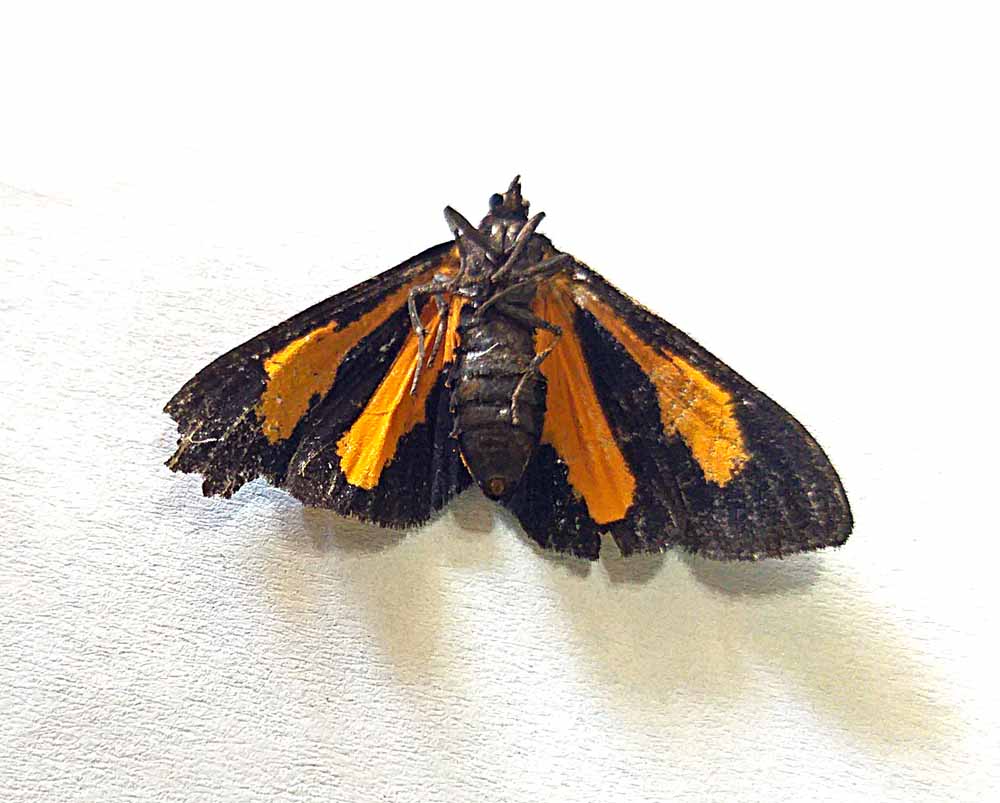
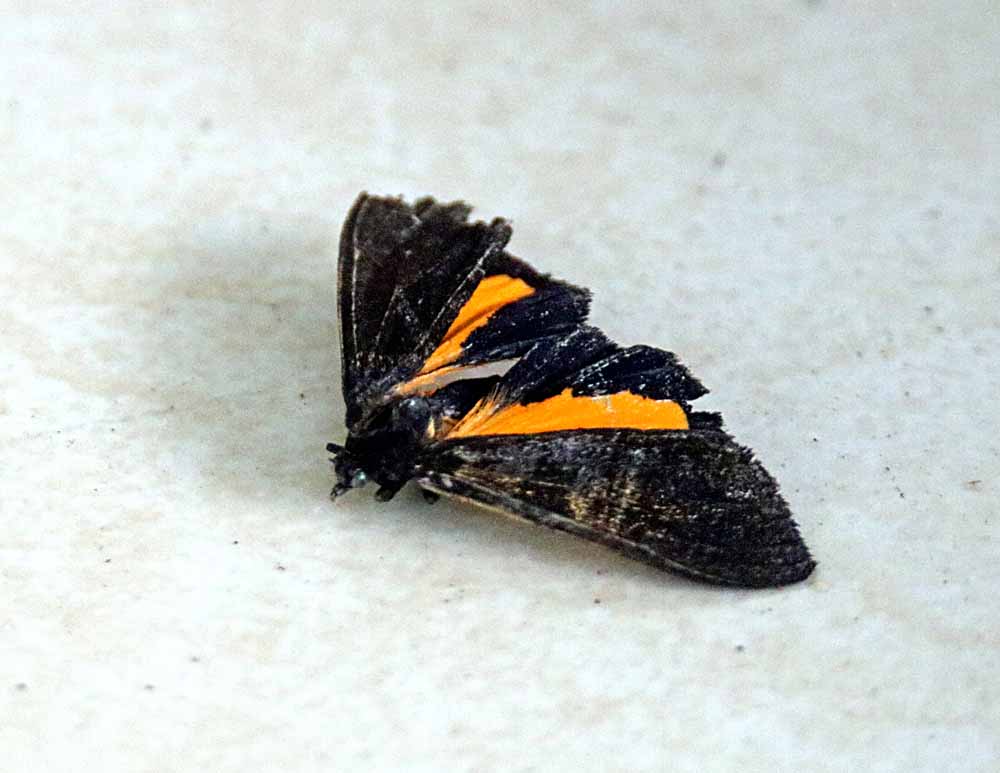
¡Pura Vida!
And for those who don’t know, I got a skin infection discovered by a local clinic. It is too strong to be treated by pills, so I was told that I had to go to an emergency room and be treated in a hospital, and I cannot afford a private hospital, so chose the public Hospital Mexico in San Jose where the treatment was started (in a bed within 6 hours), but after 2 days they moved me by ambulance to Hospital San Rafael de Alajuela because I live in Alajuela Province which is as bad as I had heard, 3 nights in a chair in the noisy Emergency Room. (They never have enough beds, which was why I went to other hospital.)
I was not doing good in the Alajuela Hospital Emergencia with noisy nights and trying to sleep in a chair. Walter (My driver, medical assistant & “adopted son”) tried to negotiate with the doctor of the day yesterday, first for a bed (there are none), then an alternative treatment plan. That particular doc also has a private practice, so they worked out an affordable home treatment plan. I was brought home after midnight this morning and rested well the rest of night.
This morning he brought his nurse (who lives in Atenas) ![]() and they set me up for home IV treatments. One of them comes 3 times a day to administer the intravenous antibiotic and other medications (I caught a cold in hospital) plus saline solution. She’s here twice during the day and he comes at night for 3 or 4 days. Walter & K (my landlord) are taking care of me and neighbors bring food. Much better situation than the hospital! Plus Walter worked out with a local Lab to come once a day to take blood for daily monitoring of my blood count or the infection.
and they set me up for home IV treatments. One of them comes 3 times a day to administer the intravenous antibiotic and other medications (I caught a cold in hospital) plus saline solution. She’s here twice during the day and he comes at night for 3 or 4 days. Walter & K (my landlord) are taking care of me and neighbors bring food. Much better situation than the hospital! Plus Walter worked out with a local Lab to come once a day to take blood for daily monitoring of my blood count or the infection.

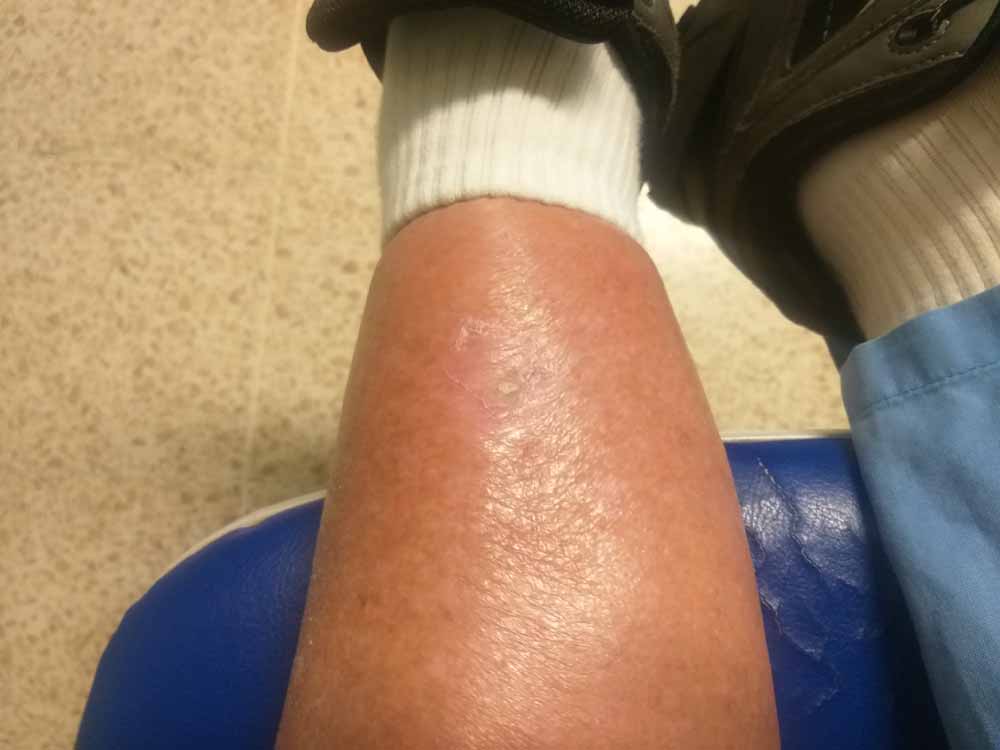
So it is looking better! If the white cell count is down by end of week, they remove this IV stuff from my arm and I take antibiotic pills for another week. Hopefully well and active very soon! The swelling on my leg (where the infection is) has gone down with much less redness. So we are getting there! Thanks for the prayers and concern expressed. Just all part of the adventure. 🙂 And life is an adventure! 🙂
¡Pura Vida!
I’ve seen this colorful Metalmark Butterfly in only two places: my garden in Atenas and at Xandari Resort in Alajuela. There are some good photos of the top of the wings in my gallery: Blue-winged Eurybia, though I kind of like this front/side view that shows off his brilliant blue eye circled in orange. 🙂 You can’t tell wildlife how to pose for a photo, but take whatever you get in the sometimes very brief time seen.
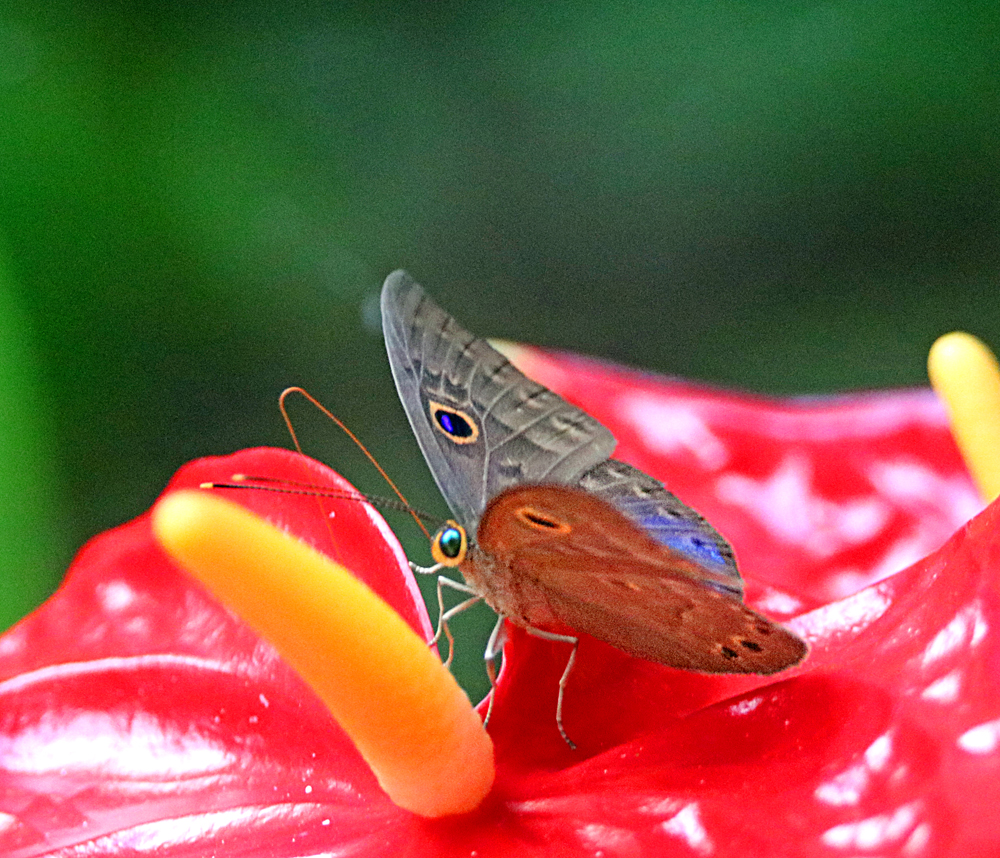
¡Pura Vida!
Hoping he continues in my garden! And that maybe the Rufous-tailed has accepted this species, since he has been chasing other species off. I just love the brilliant blue of the tail of the Blue-vented Hummingbird, Saucerottei hoffmanni OR Saucerrotia amazilia (linked to my gallery).

. . . is sometimes called a “Hummingbird Moth,” though I think it looks more like a “flying shrimp;” 🙂 but whatever, it is an interesting visitor to my garden and this year in June (2025) makes only the 3rd time I’ve seen it. Here’s two photos from this sighting and see my earlier photos in the GALLERY: Titan Sphinx Moth.
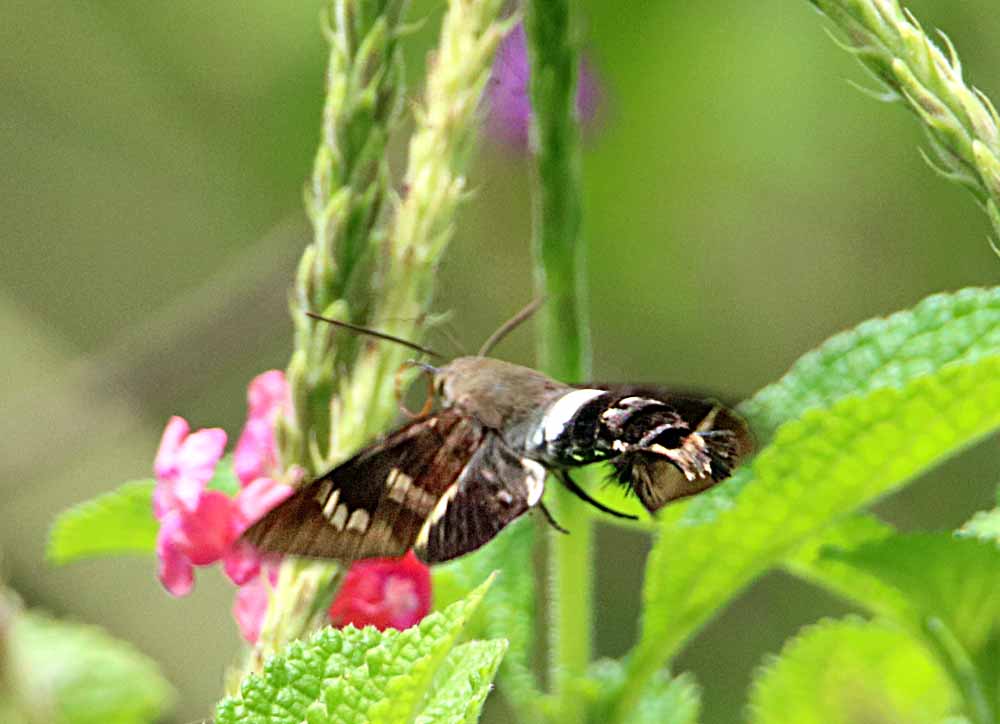
The Statira Sulphur, Phoebis statira OR Aphrissa statira (linked to my gallery) may be considered rather plain by some people, but I think the ones like this with clean, simple features are very attractive. While others of this species, that you can see in my gallery, have some brown trim on their wings and a brown spot in the forward wing. I haven’t learned yet if that is a sexual difference (common in many species) or just is in some of this species. Only this one “clean” image in today’s post. 🙂
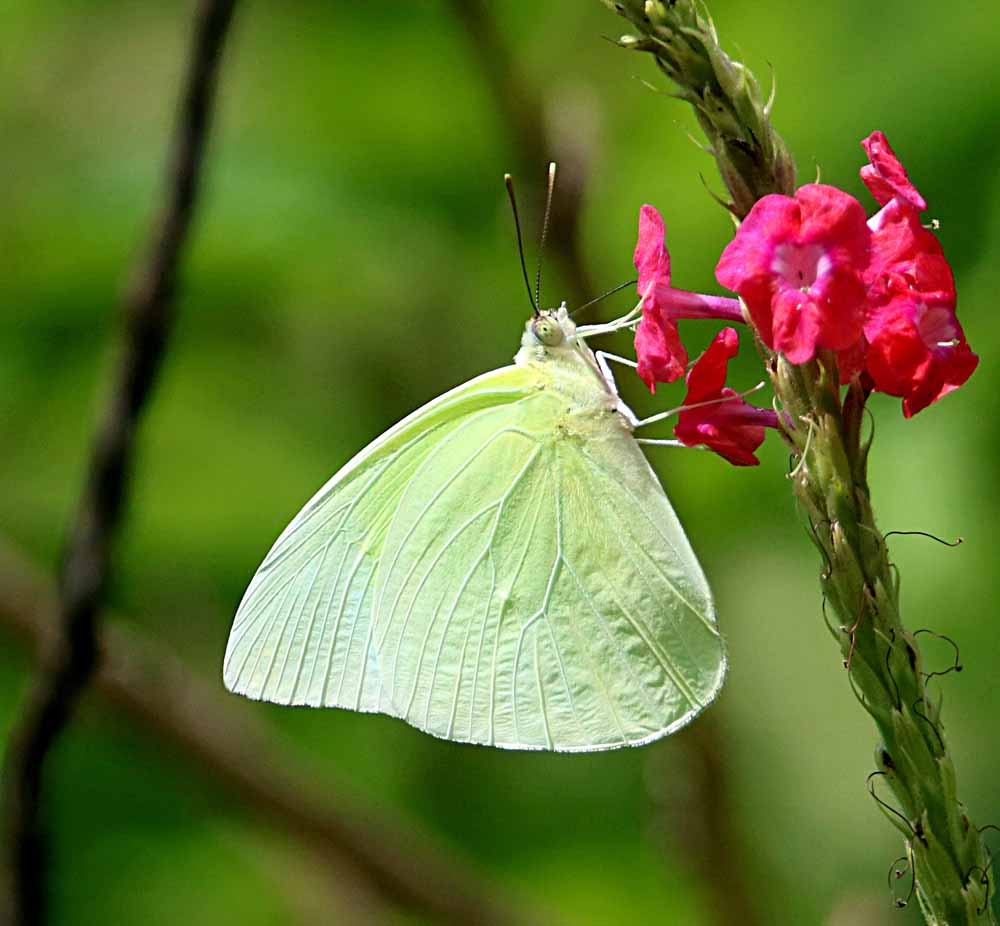
¡Pura Vida!